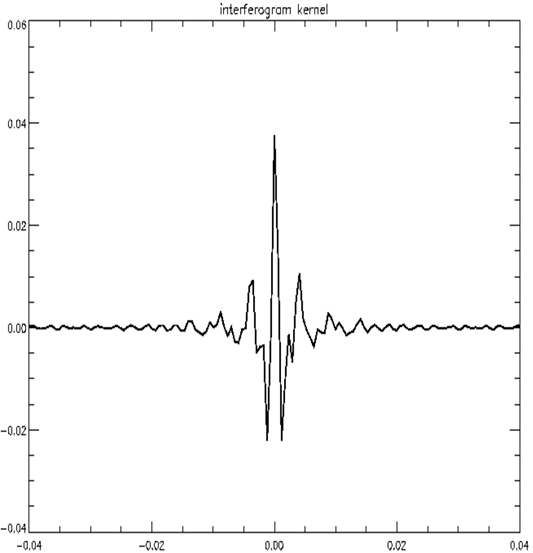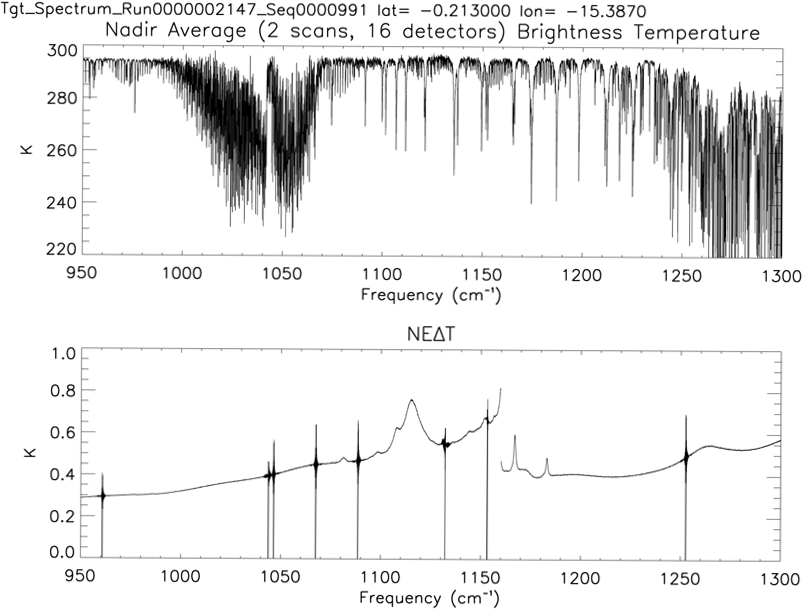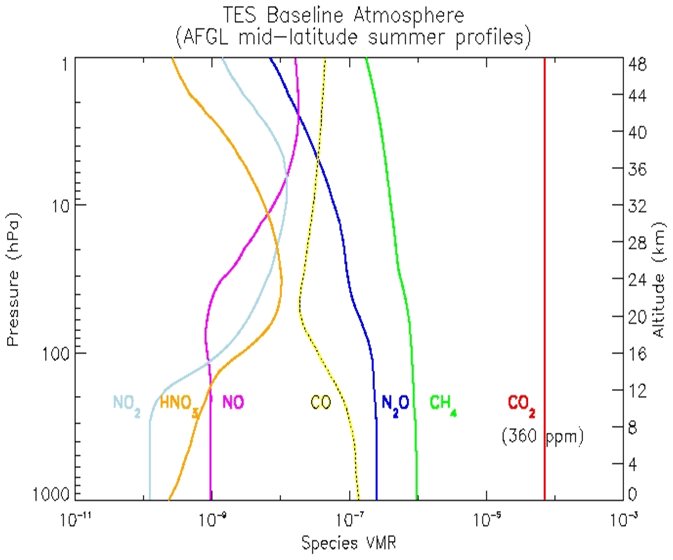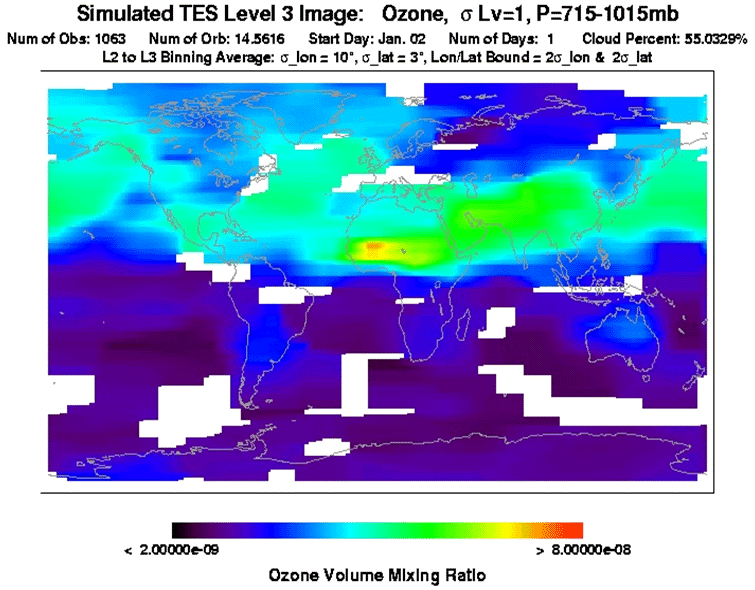Get Data
Documents
Algorithms
TES data processing falls into 4 groups:
At Level 1A, the raw data from the spacecraft are decommutated and the instrument outputs (called interferograms) reconstructed. File headers also contain important state data such as time, date, spacecraft and target locations, and instrument pointing angle.
At Level 1B, the interferograms are phase-corrected, Fourier transformed to spectra, radiometrically-calibrated and re-sampled onto a common frequency grid. Certain data quality flags are added to the header at this juncture and the results passed to Level 2.
At Level 2, vertical concentration profiles of the selected species are extracted from the data through a process of retrieval.
At Level 3, globally covered Level 2 daily, weekly, or monthly data are used to generate global species maps at uniform spatial grids. These are useful browse products.
References:
Further Reading: Worden, J.; Sund-Kulawik, S.; Shephard, M. W.; Clough, S. A.; Worden, H.; Bowman, K.; Goldman, A. "Predicted errors of tropospheric emission spectrometer nadir retrievals from spectral window selection," J. Geophys. Res., Vol. 109, No. D9, D09308, doi:10.1029/2004JD004522 , 15 May 2004.
TES Scientific Objectives & Approach, Goals & Requirements, Revision 6.0, JPL D-11294, April 14, 1999.
Download PDFTES Level 3 Algorithms, Requirements & Products, Version 2.0, JPL D-26534, April 20, 2005.
Download PDF



